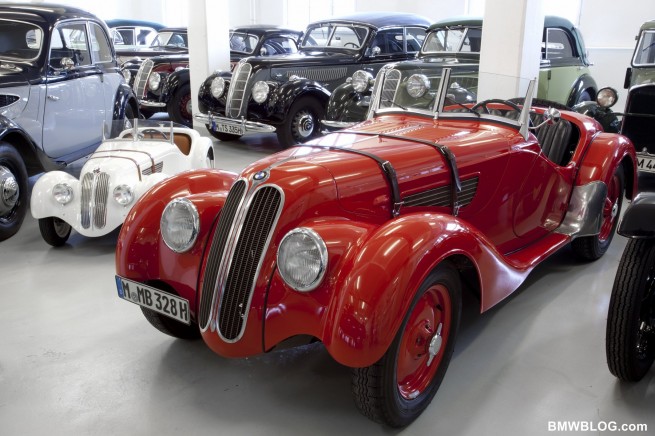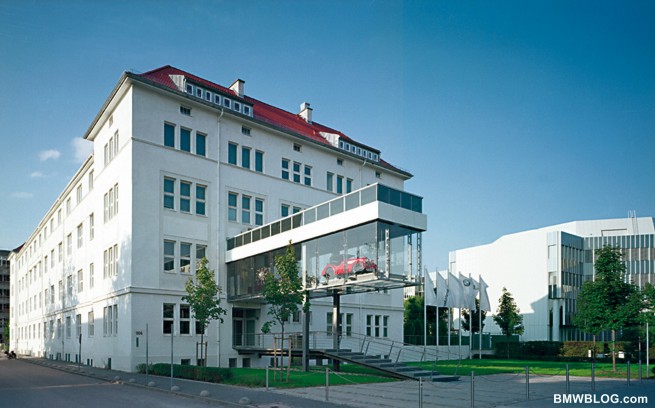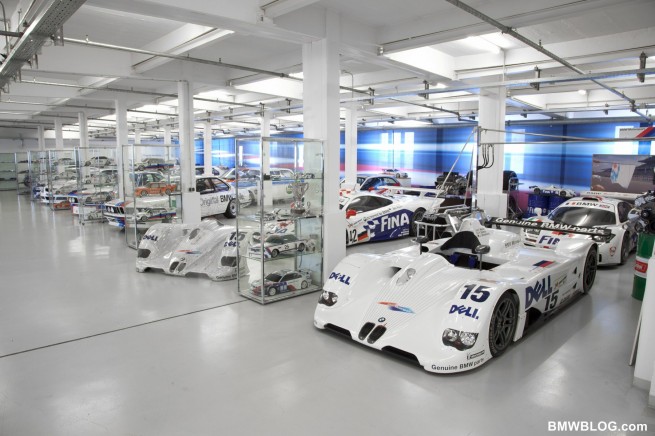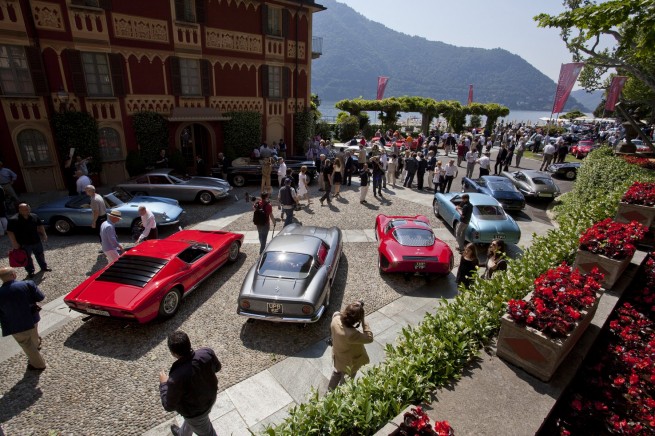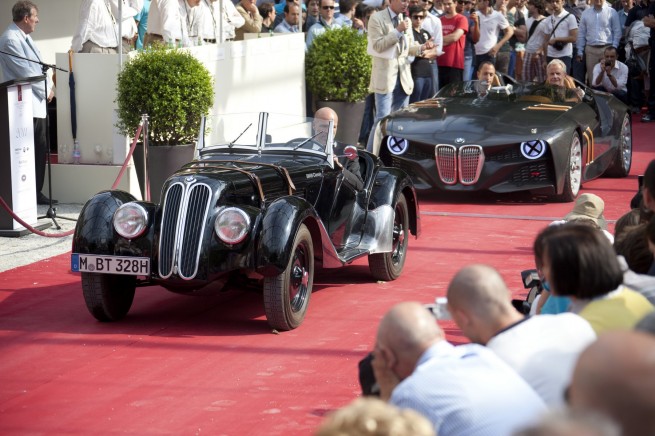Press Release: Outstanding innovations in the area of vehicle and safety engineering have always characterized cars from the
In critical situations, the safety gain for pedestrians and for the passengers in the vehicle is enormous. Another feature that BMW has presented is the “Glare-free high beam assistant”. The system locates vehicles approaching from the opposite direction and vehicles ahead, and prevents glare, despite the high beam being switched on. In this manner, the high beam component is significantly increased, which also brings about a sustained improvement in safety. Another gain in safety, not to be underestimated is the new, optional full-LED headlight, now debuting in the new BMW 6
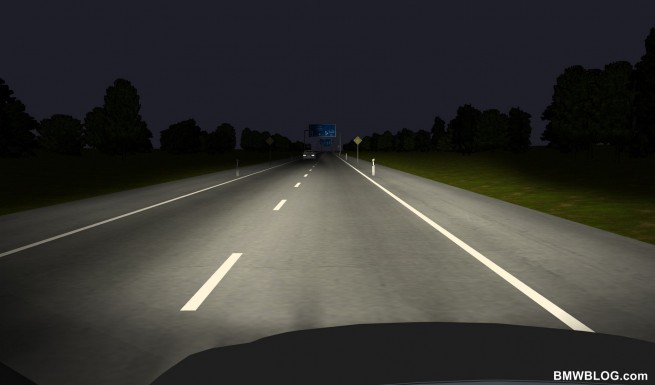
“BMW Dynamic Light Spot”: a targeted beam of light for increased safety .
The risk of a pedestrian dying or getting injured in a traffic accident is four times as high at night or at twilight than in daylight. The same applies to the passengers themselves. Accidents and, in particular, serious accidents at night are very often caused by the late recognition of persons or animals (e.g. deer) on the road. With BMW Night Vision, BMW has deployed a very effective assistance technology for driving in the dark under the umbrella of the technologies of BMW ConnectedDrive. BMW Night Vision helps the driver using a thermal imaging camera for anticipatory and safe driving at night. This support will be expanded by another BMW innovation for increasing the safety of night driving, in the form of the “BMW Dynamic Light Spot”. Through targeted illumination of pedestrians on the road, the system ensures increased safety for all those involved, including the driver of the vehicle. By using “BMW Dynamic Light Spot”, the driver can usually avoid a collision or at least reduce its severity. The “BMW Dynamic Light Spot” is a so-called marking light. This system uses sensors to identify potentially endangered objects in the driver’s surroundings which are then illuminated in a targeted manner with a spot of light. At the same time, a beam of light projected onto the road in front of the vehicle leading to the possible collision object draws the driver’s attention to that object. Thanks to early recognition of the pedestrian, the driver can either brake in time or take suitable evasive action.
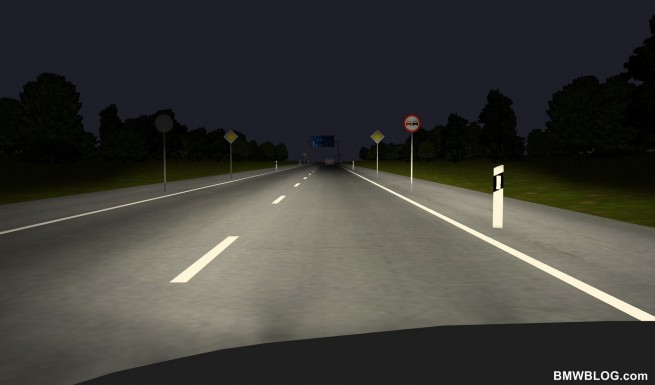
All cats are grey at night and visibility is very limited .
Conventional low beam light allows drivers a theoretical range of vision of about 50 to 85 metres at night, which does not, however, mean that objects can be recognised at that distance. In tests, the recognisability of a darkly clad pedestrian at twilight was found to be just 29 metres. This is understandable since at greater distances, only the feet are illuminated. If the rule “drive so that you can stop within your visible range” were followed in the dark, it would not be advisable to drive even at 80 km/h since at this speed the braking distance is as much as 63 metres.
Night vision assistants are good, but in future things will be even better .
Today, night vision assistants like BMW Night Vision are available. They provide the driver with an image of the area in front of the vehicle so that pedestrians and animals can be seen even from distances of several hundred metres away. However, this assumes that the driver uses the Night Vision screen like the rear view mirror and casts a glance at it from time to time. The technology works like this: BMW Night Vision uses an infrared camera with a viewing angle of 24 degrees. It generates a thermal image that shows warm objects – people or animals – as bright shapes.
The marking light – targeted illumination helps to gain time .
Today, it is technically possible to identify the position of pedestrians very accurately. Once this position is known, a headlight can focus on that area and show directly where a pedestrian, who is possibly endangered, is. This system is called the Dynamic Light Spot at BMW. The big difference to other marking light assistants is that the BMW system projects a strip of light on the road to direct the attention of the driver to the hazard. The light automatically draws the attention of the driver to the possible collision and triggers an intuitive and fast reaction from him.
He who sees earlier can react earlier .
In general, it is assumed that a vehicle driver drives in the direction in which he is looking. This has been experienced in vehicle safety training when for example, the driver learns to take evasive action from a tight situation – he usually concentrates on the zone directly in front of the vehicle. So in vehicle safety training, when a collision is imminent, the driver is taught to focus on a free pathway or the “escape route” away from the road so that this particular direction for evasive action is within the line of vision. With Dynamic Light Spot, things are different. When an illuminated object that is beyond the braking distance is made visible to the driver, he has sufficient time to use the brakes to stop before the obstacle is reached. At the same time, Dynamic Light Spot and the beam of light on the road are switched off as soon as the vehicle is close enough for the normal lights to continue to illuminate the object. What Dynamic Light Spot from BMW does is to indicate hazards to the driver from as far away as possible and direct his attention to them. The technical components of this system are essentially highly efficient sensors and headlight systems.
The sensor system recognises living creatures by their heat radiation .
To be able to warn the driver of a hazard in time, a recognition distance from the hazard of about 100 metres must be ensured, regardless of the weather conditions. To achieve this, the light marking system must have a sufficiently perceptive sensor system. All the currently available night vision systems based on near infra-red require an input of 100W for illuminating the surroundings in front of the vehicle. This corresponds to an additional CO2 emission of 3 g/km, which is not acceptable in the present circumstances. The BMW Night Vision Assistant has a far greater recognition range and no additional light source is required. This is because BMW Night Vision is based upon detection of the heat radiated by objects and is additionally less susceptible to the influence of the weather. BMW Night Vision guarantees positive recognition of persons at a distance of 97 metres on average.
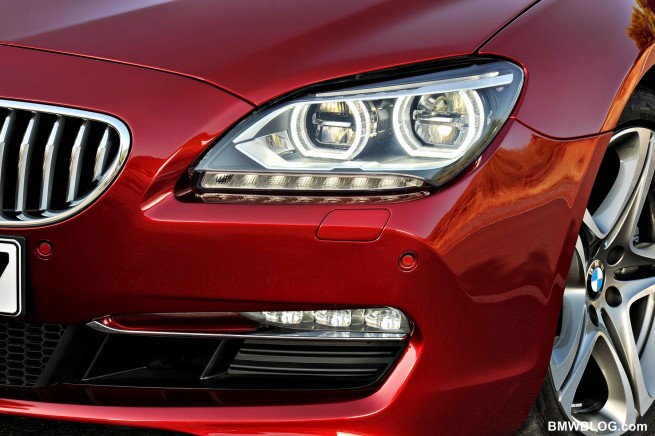
Headlight systems: with LED Arrays the obstacle is in direct view.
When, as in the case of BMW Night Vision, the vehicle is fitted with a suitable sensor system to achieve recognition of persons at an adequate distance, it has to be complemented by corresponding headlight technology to realise Dynamic Light Spot. There is a wide range of technical possibilities from pixel light headlights and Xenon and swivelling modules to the so-called LED arrays – all with specific advantages and disadvantages. At present, the light marking is achieved using a swivelling LED spotlight. This ensures that with a low energy requirement, a beam of light that is optimal for the driver is generated in a highly dynamic manner, and a pleasant light image is generated by the swivelling movement. In the case of “BMW Dynamic Light Spot”, these high-power LEDs are integrated into the installation space of the fog lamps so that the remaining vehicle lighting can be conventional technology; full-LED headlights are not a system requirement.
Dynamic Light Spot can significantly reduce accident figures.
BMW is planning to include the Dynamic Light Spot functionality as a part of the special BMW Night Vision system; it is a result of the BMW ConnectedDrive innovation philosophy for its future new models. The gain in safety – for the drivers and passengers and those who could possibly be involved in a collision at night – that BMW is striving for has already been proven within the framework of system development. During BMW test drives in the development phase of Dynamic Light Spot, on average one object was highlighted and illuminated every hour.
Glare-free high beam assistant – less work and more light .
Driving at night or in poor visibility is far more stressful than daylight driving for most drivers. One of the reasons for this is the late and more difficult recognition of the road in dark surroundings – which is also due to the reduction of the colour perception of the eye. In addition, there are the strong bright/dark contrasts, which force the eyes to constantly adapt to brightness or darkness. In addition, especially in the case of the eyes of middle-aged people, this so-called adaptability noticeably falls with increasing age.
Available Now: the high beam assistant relieves the driver .
Constantly driving on high beam significantly improves recognition of the course of the road and of hazards, but it cannot be done because other drivers are blinded by the glare. The first step in solving this problem is the high beam assistant, which is already being offered by BMW as special equipment. It recognises other vehicles at an early stage and depending on the traffic situation, switches the beam to high or low automatically. A camera sensor in the interior mirror bracket registers the headlight beams of approaching vehicles from a distance of as much as approximately 1000 metres, and the taillights of other vehicles in front from about 500 metres. The assistant then automatically switches the high beam to low. As soon as other drivers are no longer in danger of being blinded by the glare, the high beam is switched on again. This automatic system and the smooth transition between high and low beam significantly relieve the driver. The high beam assistant also switches to low when the ambient light is sufficient, such as in built up, well-lit areas.
Coming up: the glare-free high beam assistant from BMW.
Using BMW ConnectedDrive technologies, always driving on high beam can become a reality with the glare-free high beam assistant. The system can remain switched on during the entire night drive; approaching vehicles and vehicles in front will be recognised in time and can, so to speak, be actively saved from glare or masked from the light beam. The glare-free high beam assistant also uses the camera sensor in the interior mirror bracket. But in this case, the image processing goes a step further and “recognises” the position of the other vehicle. This object recognition then controls the vehicle’s own headlights, which have a mobile glare mask. The high beam is then “masked” in such a manner that approaching vehicles or vehicles in front are not dazzled. The glare-free high beam assistant from BMW recognises cars, trucks, motorcycles and even bicycles if their lights are adequate. This system sets itself apart from other similar systems offered by competitors, in among other things, that the driver’s guidance in the case of oncoming traffic has priority over adapting the tunnel for the other vehicles. As a result, the driver of a BMW with the glare-free high beam assistant always enjoys the greatest possible high beam illumination available, without dazzling other drivers.
The benefits of the glare-free high beam assistant .
Night test drives by BMW have shown that with the glare-free high beam assistant, a far more intensive use of the high beam is possible. This results in better perception of hazardous situations. At the same time, the significantly greater range of the lights, even with approaching vehicles or vehicles ahead, makes it easier for the driver to follow the road. Less steering movements and the increased feeling of safety thus provide relief to the driver at night. Since the assistant is entirely automatically controlled, the driver no longer needs to manually switch between high and low beam, which results in less fatigue. Night driving in a BMW is thus safer and less stressful.
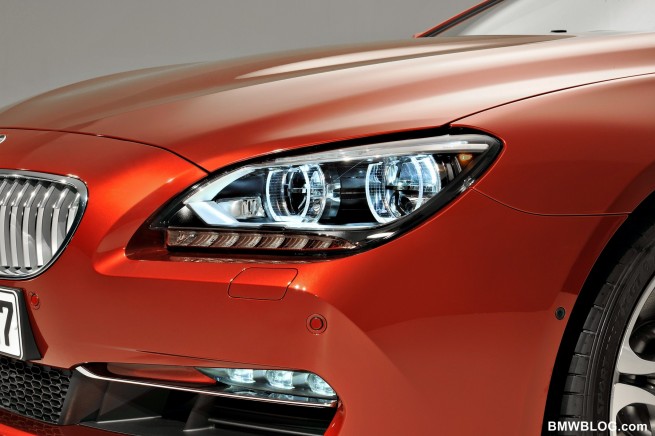
Adaptive full-LED headlights in the new BMW 6 Series Coupé .
The new BMW 6 Series Coupé already has bi-xenon headlights as standard equipment. These dual round headlights give the sporting, elegant coupé the brand characteristic front look. As an enhanced feature, the BMW 6 Series Coupé can be ordered with adaptive LED headlights. They reinforce the characteristically concentrated look of the vehicle and are, in fact, the most highly-developed vehicle lights currently available. BMW uses the full-LED headlights as adaptive LED headlights in the BMW 6 Series Coupé, i.e. all of the illumination functionality is realised using LEDs.
BMW attaches a great deal of importance to the homogeneity of the lighting modes low beam and daytime running beam. The goal of the development was optimally balanced light distribution, meeting the requirements for directing the attention of the driver, in conjunction with an aesthetic, typical BMW headlight design. The dual round icon has LED light rings as parking lights and the daytime driving light. These light rings are flattened at the bottom, dominated by an LED accentuating light at the top and for the first time have been designed in the form of a three-dimensional body. This component accentuates the typical appearance of the brand both in the daytime mode as well as the night design. For the first time, a BMW at night is now recognisable by its 4-eye front, both on low beam and high beam, the same look familiar from the daytime driving mode. This means that the low beam light is generated in the upper half and the high beam in the lower half of all of the four light rings.
The adaptive LED headlights improve night vision significantly .
The bright white light of the adaptive LED headlights in the BMW 6 Series Coupé effects a strong and harmonious illumination of the road. Particularly easy on the eye: the LED light is considerably closer to daylight than the light from halogen or xenon headlights. Therefore, reflective objects appear with greater contrast and can be recognised earlier.
Adaptive LED headlights, cornering lights and LED indicator lights .
The adaptive LED headlights are controlled as a function of the speed, the steering angle and the yaw rate. The swivelling angle of the headlights thus automatically adjusts itself to the course of the bend. In addition, the cornering light is generated with another LED light source in the headlight housing, which, at speeds up to 70 km/h, ensures a far better lighting in front of and alongside the vehicle in the direction of exit. The LED technology is also used for the turn indicator lights. These LED turn signals consists of eight LED units each arranged in a row below the light rings. Apart from better visibility in darkness, the adaptive LED headlights also significantly improve the signalling action of the lights.

















